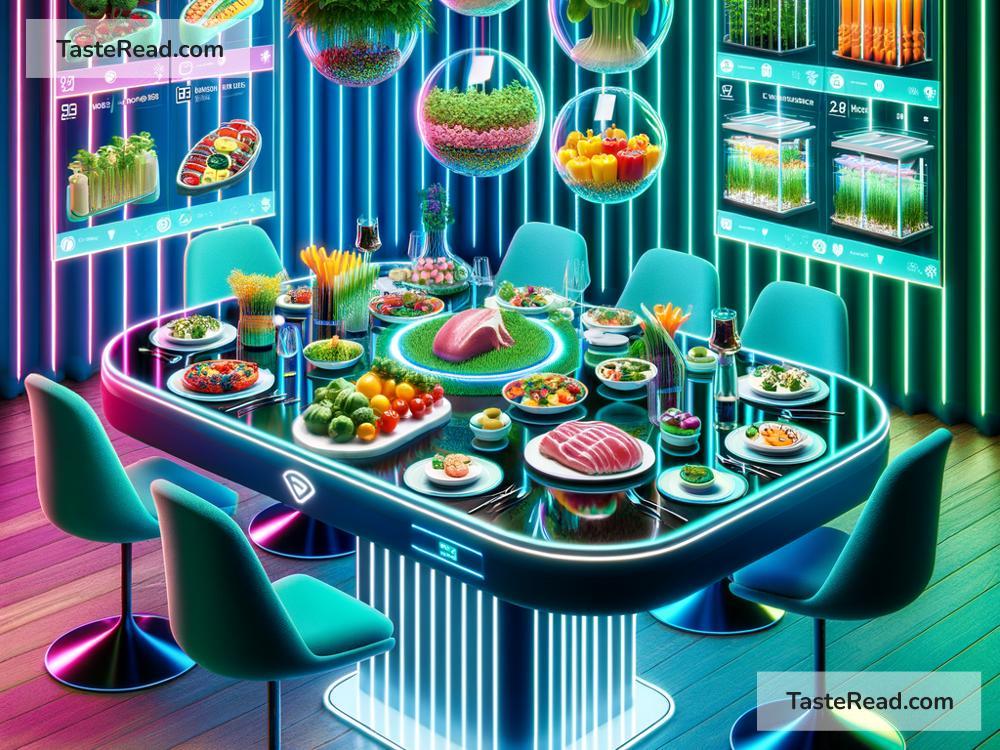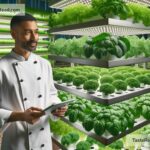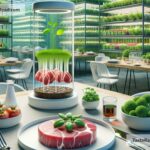The Future of Food: Systemic Solutions for a Healthier Planet
Food is something we all depend on every day. It brings families together, fuels our bodies, and delights our taste buds. But food is also deeply connected to the health of our planet, economy, and communities. As the world population continues to grow and climate change accelerates, we must think about the future of food differently. How do we ensure that everyone has access to healthy, affordable, and sustainable food? The answer lies in systemic solutions—big changes that address the root causes of challenges in our food system.
Let’s explore the future of food and the solutions that could redefine how we grow, distribute, and enjoy it.
The Problems in Today’s Food System
Our current food system faces many challenges:
-
Climate Change
Farming requires water, energy, and healthy soil. Unsustainable practices like deforestation and overuse of chemical fertilizers are damaging ecosystems and contributing to climate change. At the same time, extreme weather—like droughts and flooding—makes it harder for farmers to grow crops. -
Food Waste
Shockingly, about one-third of all food produced globally goes to waste. This waste happens everywhere—in farms, factories, supermarkets, and even in our homes. Wasted food costs money and harms the environment, as decomposing food releases harmful greenhouse gases. -
Hunger and Inequality
While some countries have an abundance of food, others face famine and malnutrition. Millions of people worldwide struggle with hunger, even though there’s enough food to feed everyone. This imbalance is caused by issues like poverty, lack of infrastructure, and unequal food distribution. -
Unhealthy Diets
In many parts of the world, people are eating more processed foods that are high in sugar, salt, and unhealthy fats. This has led to rising rates of obesity, diabetes, heart disease, and other health problems. Meanwhile, nutritious foods like fruits and vegetables often remain inaccessible or unaffordable for many families.
What Could the Future of Food Look Like?
Now that we understand the problems, let’s imagine a better future. A food system built on innovation, sustainability, and equity could revolutionize how we eat and live.
-
Sustainable Farming Practices
Farmers of the future could use advanced techniques to grow food while protecting the environment. Practices like regenerative agriculture restore soil health and reduce the need for harmful chemicals. Vertical farming—where crops grow indoors in stacked layers—could allow farming in urban areas and use far less water and land. -
Alternative Proteins
Meat production puts enormous pressure on our planet, consuming water, land, and energy, while releasing high levels of greenhouse gases. A promising solution is plant-based or lab-grown proteins. Companies are now creating burgers, steaks, and even seafood from plants or cultured animal cells. These alternatives mimic traditional meat while being more sustainable. -
Personalized Nutrition
With the help of technology, food could become more tailored to our individual needs. Apps and wearable devices might analyze our health data and recommend meals based on our dietary goals. Imagine a future where every bite is perfectly balanced for your body! -
Food Tech and Automation
Technology is transforming how food is grown, processed, and delivered. Robots and drones might harvest crops or deliver meals directly to your doorstep. Artificial intelligence (AI) could help predict food shortages or reduce waste by analyzing supply chains.
How Do We Fix the Food System?
The future of food isn’t just about cool inventions—it’s about creating systemic solutions that work for everyone. Here’s how we can make real change:
-
Support Small Farmers
Small-scale farmers grow food in sustainable ways and serve local communities. Governments and organizations can provide them with education, financial support, and new technologies to help them succeed. -
Reduce Food Waste
Everyone can play a role in reducing food waste. Grocery stores can donate unsold food to charities, while restaurants can adopt zero-waste practices. At home, we can plan meals better, use leftovers, and compost uneaten food. -
Make Food Affordable and Accessible
Governments and communities must work together to ensure that healthy food is available in every neighborhood, regardless of income. Investing in infrastructure, like better transportation and refrigeration, can help deliver fresh foods to areas that lack access. -
Educate People About Healthy Eating
Teaching people about nutrition can empower them to make better choices. Schools can include lessons on cooking and healthy eating habits, while campaigns can raise awareness about the benefits of whole, fresh foods. -
Celebrate Food Diversity
Our planet offers a rich variety of foods from different cultures and ecosystems. Preserving local food traditions and promoting biodiversity can make our food system more resilient and enjoyable.
A Vision for a Brighter Food Future
Imagine a world where food brings people joy without harming the planet. Picture crops thriving in urban greenhouses, nutritious meals tailored to your needs, and systems that ensure no child goes hungry. This vision is possible if we work together toward change.
The future of food is not just a technological challenge—it’s a human one. Governments, businesses, farmers, scientists, and communities must collaborate to build a system that prioritizes health, sustainability, and fairness. With bold action and innovative ideas, we can create a food system that nourishes both humanity and nature.
Food has always been central to life. By rethinking its future, we can turn challenges into opportunities and transform the way we feed the world for generations to come.
What steps can you take to make the food system better? Remember, every small action—from choosing sustainable products to reducing food waste—makes a difference. The future of food starts with all of us.


